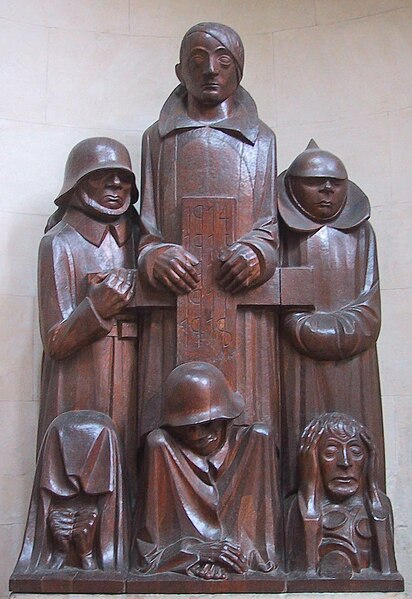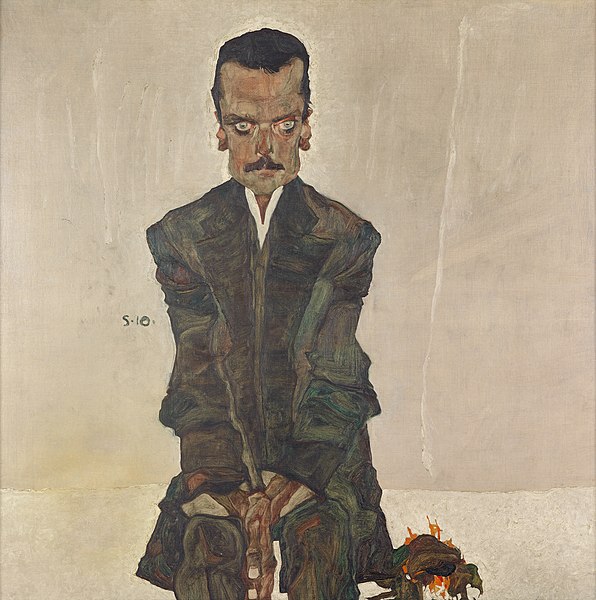Ernst Heinrich Barlach was a German expressionist sculptor, medallist, printmaker and writer. Although he was a supporter of the war in the years leading to World War I, his participation in the conflict made him change his position, and he is mostly known for his sculptures protesting against the war. This created many conflicts during the rise of the Nazi Party, when most of his works were confiscated as degenerate art. Stylistically, his literary and artistic work would fall between the categories of twentieth-century Realism and Expressionism.
Ernst Barlach Self-portrait (1928)
The young Ernst Barlach
The Avenger, 1914, National Gallery of Art
The Magdeburger Ehrenmal (Magdeburg commemorative sculpture) (1929), which created a large controversy about Barlach's anti-war position (Magdeburg Cathedral)
Expressionism is a modernist movement, initially in poetry and painting, originating in Northern Europe around the beginning of the 20th century. Its typical trait is to present the world solely from a subjective perspective, distorting it radically for emotional effect in order to evoke moods or ideas. Expressionist artists have sought to express the meaning of emotional experience rather than physical reality.
Edvard Munch, The Scream, c.1893, oil, tempera and pastel on cardboard, 91 × 73 cm, National Gallery of Norway, inspired 20th-century expressionists.
El Greco, View of Toledo, c.1595/1610 is a Mannerist precursor of 20th-century expressionism.
Wassily Kandinsky, Der Blaue Reiter, c.1903
Egon Schiele, Portrait of Eduard Kosmack, c.1910, oil on canvas, 100 × 100 cm, Österreichische Galerie Belvedere








